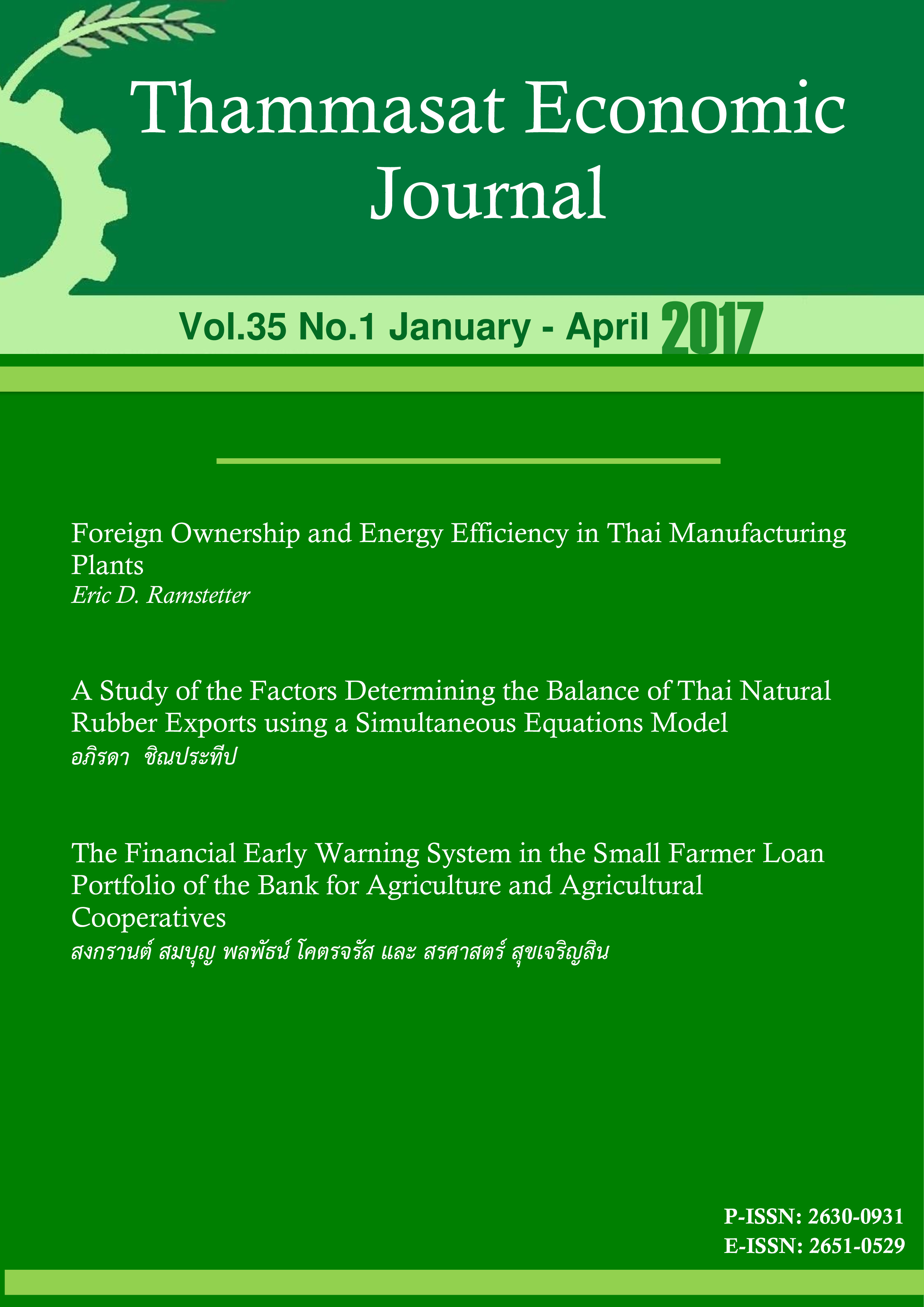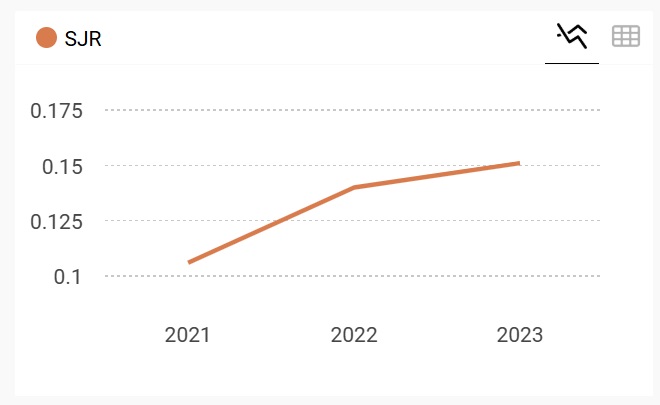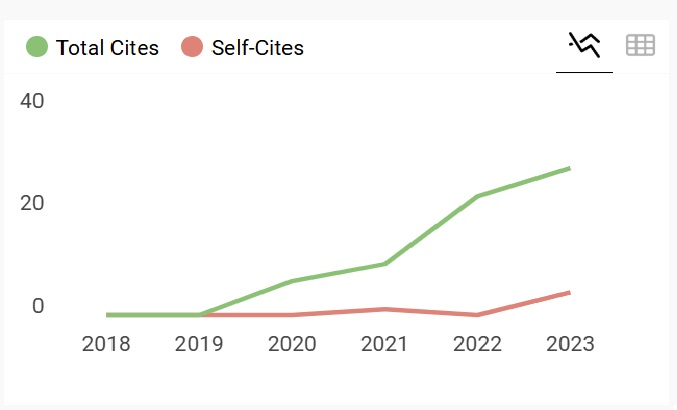The Financial Early Warning System in the Small Farmer Loan Portfolio of the Bank for Agriculture and Agricultural Cooperatives
Keywords:
financial early warning system, small farmer loan portfolioAbstract
The objective of this study was to develop the financial early warning system in the small farmer loan portfolio of the Bank for Agriculture and Agricultural Cooperatives, a crucial organization among Agricultural Financial Institutions in Thailand. A logit model was developed to identify the warning signs concerning loan default (the probability of default) based on leading economical and geographical risk factors. The model was tested to ascertain the validity of its predicting power in terms of discriminating between debtors. The results of the logit model are subsequently employed to formulate the probability capabilities of the default model, the financial early warning system assessment of each debtor, the credit risk rating model, the financial early warning system status within the small farmer loan portfolio, the expected profits before expected loss equations, and the average of the risk adjusted returns on capital equations. The results show how exposure can be managed on a portfolio basis, which will enable the Bank for Agriculture and Agricultural Cooperatives to recognize the warning signs of default, diversify the risk and allocate the risk adjusted return on capital for each share within the portfolio, conduct analysis to determine interest rates on the basis of risk, calculate capital charges for each debtor and ensure the optimum interest rate structure extant in the small farmer loan portfolio.
References
Bandyopadhyay, A. (2007). Credit risk models for managing bank’s agricultural loan portfolio. MPRA Paper No.5358, University Library of Munich, Germany.
Bandyopadhyay, A., & Saha, A. (2007). RAROC & EV: The new drivers of business growth in Indian banks. MPRA Paper No.8920, University Library of Munich, Germany.
Bank of Thailand. (2013). Supervisory guideline on capital fund under pillar I of Basel II capital accord. Retrieved from http://www.bot.or.th/Thai/FinancialInstitutions /Highlights/baselIII/Documents/Basel_II_III_AM.pdf.
Basel Committee on Banking Supervision (BCBS). (2005). Studies on the validation of internal rating system. Working Paper No.14, Bank For International Settlements. Retrieved from www.bis.org/publ /bcbs_wp14.pdf.
Basle Committee on Banking Supervision, & Basel Committee on Banking Supervision. (2004). International convergence of capital measurement and capital standards: A revised framework. Basel: Bank for International Settlements.
Chantapong, S. (2015). The determination of the efficiency of the early warning system. Special lecture at the bank for agriculture and agricultural cooperatives (Head office). Bangkok: Bank for Agriculture and Agricultural Cooperatives.
Chlopek, P. (2013). RAROC as a credit risk approach. Nauki o Finansach, 3 (16), 64-76.
Dinh, T., & Kleimeier, S. (2007). A credit scoring model for Vietnam’s retail banking market. International Review of Financial Analysis, 16(5), 471-495.
Geyfman, V. (2005). Risk-adjusted performance measures at bank holding companies with section 20 subsidiaries. Working Paper No.05-26, Federal Reserve Bank of Philadelphia.
Harwood, J., Heifner, R., Coble, K., Perry, J., & Somwaru, A. (1999). Managing risk in farming: concepts research and analysis. Agricultural Economic Report No.774, US Department of Agriculture, Economic Research Service.
Kritayakirana, K., Srithongdee, C., & Kunaphinya, S. (2011). Credit risk management with Basel II, RAROC (risk adjusted return on capital), and risk-based pricing-workshop & case study. Bangkok, Thailand: The Thai Institute of Banking and Finance Association.
Schreiner, M. (2004). Benefits and pitfalls of statistical credit scoring for microfinance. Savings and Development, 28(1), 63–86.
Sinha, S., & Lipton, M. (1999). Damaging fluctuations, risk and poverty: A review background paper for the world development report 2000/2001. Poverty Research Unit, University of Sussex.
Srisansanee, C., & Surapaitoolkorn, W. (2005). Basel II & risk management. Thai Bond Market Association.
Sumetheeprasit, J. (2013). Early warning system (in Thai). Retrieved from http://Chirapon.word press.com.
Tirapat,S., & Kiatsupaibul, S. (2008). Introduction to credit scoring. Special lecture at the Bank for Agriculture and Agricultural Cooperatives (Head office). Bangkok: Bank for Agriculture and Agricultural Cooperatives.
Vigano, L. (1993). A credit scoring model for development bank: An African case study. Savings and Development, 17(4), 441-482.
Wenner, M. D., Navajas, S.,Trivelli, C., & Tarazona, A. (2007). Managing credit risk in rural financial institutions in Latin America. Inter- American Development Bank.









